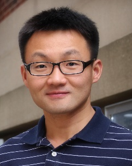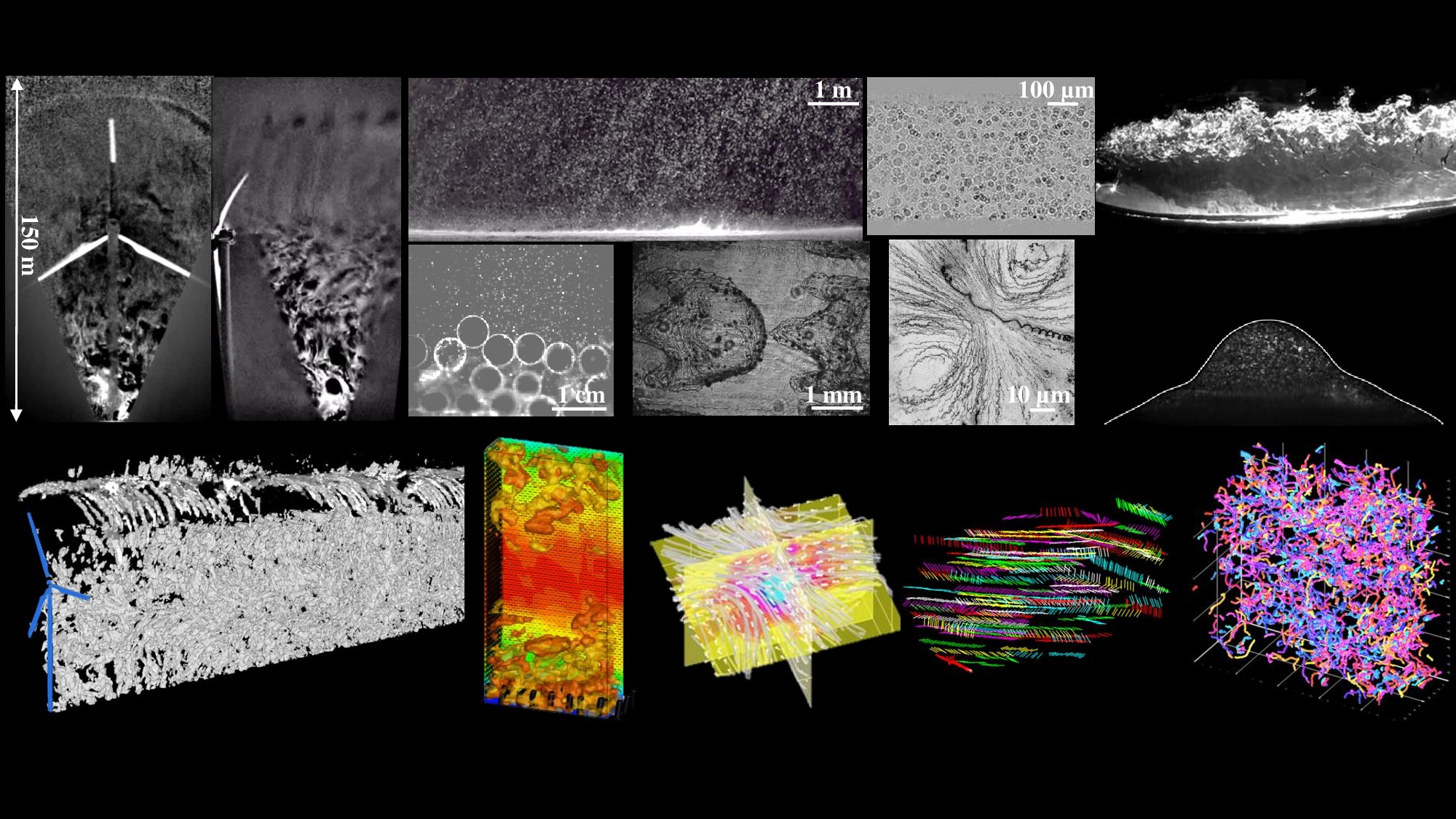Description of the Session
This masterclass will provide a comprehensive exploration of cutting-edge Particle Image Velocimetry (PIV) and Particle Tracking Velocimetry (PTV) methodologies for complex fluid mechanics research. Participants will gain insights into fundamental principles, practical guidelines, and real-world applications of these techniques across diverse domains—ranging from challenging field deployments to multiphase flows and advanced three-dimensional imaging using digital inline holography (DIH). Through a structured progression from basic concepts to state-of-the-art implementations, attendees will learn how to effectively design experiments, manage unique constraints, and leverage innovative computational tools for robust data acquisition and analysis.
Profile of the Instructor

Prof. Jiarong Hong is a Professor of Mechanical Engineering and Electrical & Computer Engineering at the University of Minnesota, where he is also affiliated with the Minnesota Robotics Institute, the Institute on the Environment, and the Saint Anthony Falls Laboratory. In addition, he serves as the Chief Technology Officer of Astrin Biosciences, Inc., a startup focused on personalized cancer diagnostics and treatment, and is the founder of Particle4X, Inc., a company pioneering advanced particle diagnostic techniques for diverse applications. He earned his B.S. from the University of Science and Technology of China (2005) and his M.S. and Ph.D. from Johns Hopkins University (2008, 2011). Since joining the University of Minnesota in 2012, his research has centered on the development of cutting-edge flow imaging techniques, or “flowscopes,” enabling unprecedented spatial and temporal resolution for observing fluid flows and particle behaviors across a wide range of fields. By leveraging these innovative tools, his work addresses fundamental questions in fluid dynamics and drives transformative research in oceanography, agriculture, robotics and sensing, microbiology, medical sciences, and materials science. Hong has published over 130 journal papers and holds 18 international and U.S. patents. His contributions have been recognized with several awards, including the National Science Foundation CAREER Award, the Office of Naval Research Young Investigator Award, and the McKnight Land-Grant Professorship at the University of Minnesota. His research on wind energy, supercavitation, snow settling, harmful algal bloom detection, drone-based wildfire characterization, COVID-19 transmission, and cancer diagnostics has garnered significant international media attention and been featured on numerous television programs.
Session Details
This three-session masterclass provides a structured progression from foundational principles to practical implementation strategies and illustrative case studies. Each two-hour session begins with core theoretical concepts, moves into the practicalities of experimental setup and data processing, and concludes by examining real-world applications. Together, these sessions equip participants with the knowledge and tools to tackle complex fluid measurements, from challenging field conditions to intricate multiphase scenarios and cutting-edge three-dimensional imaging techniques.
Session 1: Implementing PIV/PTV in the Field:
This session focuses on adapting PIV/PTV methods to outdoor and large-scale environments. It examines the complexities inherent in field measurements, including maintaining consistent particle seeding, selecting appropriate tracers, ensuring particle traceability over expansive and variable domains, and performing calibration under non-ideal conditions. Strategies for handling noisier data and building robust experimental designs will be discussed, supported by examples spanning atmospheric and oceanic boundary layers, wind turbine wakes, snow settling, and biological flow measurements.
Session 2: PIV/PTV in Multiphase Flows
This session explores the intricacies of applying PIV/PTV to multiphase systems where bubbles, droplets, or particles complicate the measurement process. It clarifies how to maintain optical clarity, achieve proper seeding density, and mitigate signal degradation, while outlining fundamental guidelines for selecting tracers and refining data acquisition and processing methods. Case studies in particle-laden jets, cavitation and bubbly flows, and diverse industrial or environmental configurations illustrate best practices and demonstrate how to derive accurate velocity fields and meaningful insights from otherwise challenging datasets.
Session 3: 3D Imaging with Digital Inline Holography (DIH)
This session introduces DIH as a versatile, affordable, and compact approach to three-dimensional PIV/PTV. It covers the basic principles of coherent light interference and single-camera setups, addresses the complex computational demands historically limiting its use, and highlights recent advancements—including deep learning techniques—that simplify data reconstruction. Through examples ranging from microfluidics, turbulence, and vorticity field analysis to flow-structure interactions and surface deformation measurements, this session reveals DIH’s transformative capabilities. It also extends beyond traditional fluid mechanics, illustrating how DIH can track three-dimensional particle motions, analyze microorganism behavior, identify harmful algal blooms, and support medical diagnostics.
Relevance and Application
This masterclass targets graduate students, researchers, and industry professionals involved in fluid mechanics, aerospace engineering, oceanography, environmental sciences, biomedical engineering, and related disciplines. By systematically covering fundamental concepts, practical implementation strategies, and a range of application-driven examples, the course empowers attendees to tackle complex measurement scenarios. Participants will emerge with the skills to design cutting-edge experiments, improve data quality, interpret challenging datasets, and explore new avenues in both established and emerging fields where particle-based flow diagnostics can be a transformative tool.
Fees and session details
Date of the Workshop : 15th , 22nd and 29th March, 2025
Timings : 10:00 a.m. - 12 Noon
Fees:
Early Bird Registration : Rs. 1299 + GST (13th January -4th March)
Regular Registration : Rs. 1499 + GST (5th March - 12th March)



Reviews
There are no reviews yet.